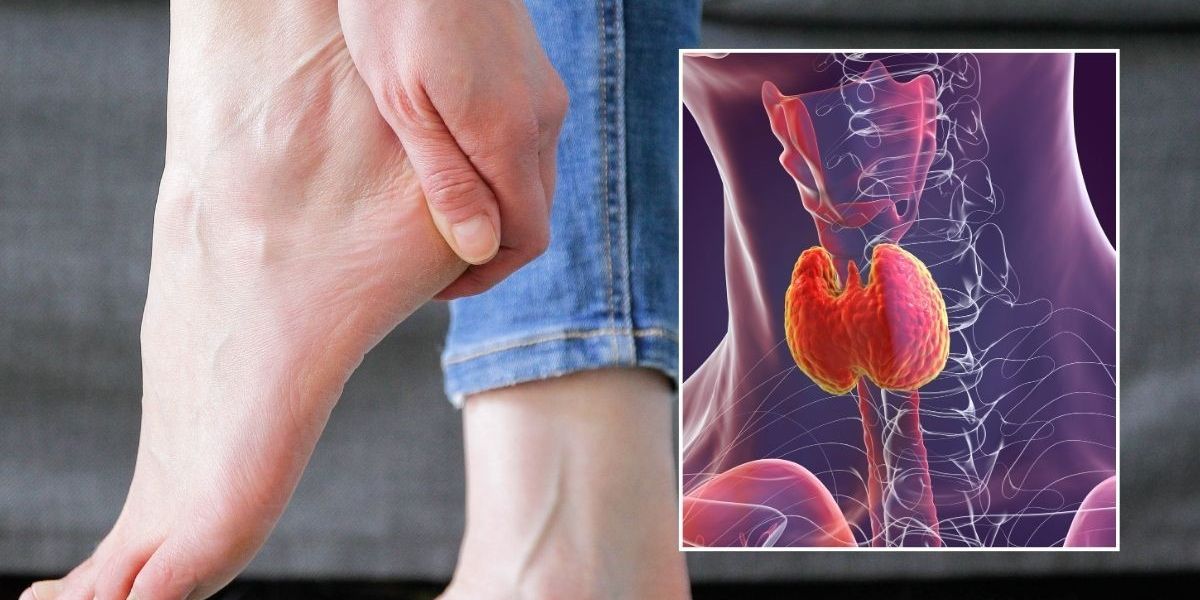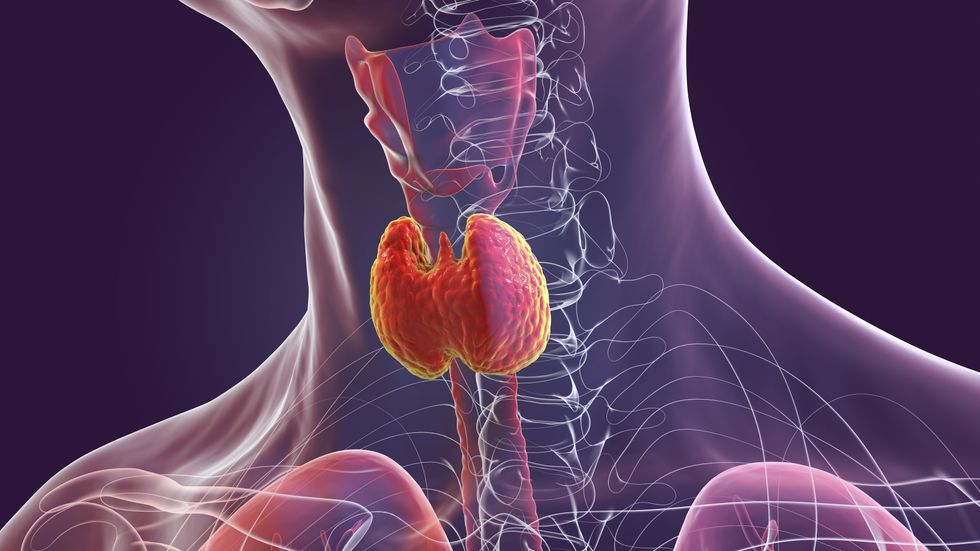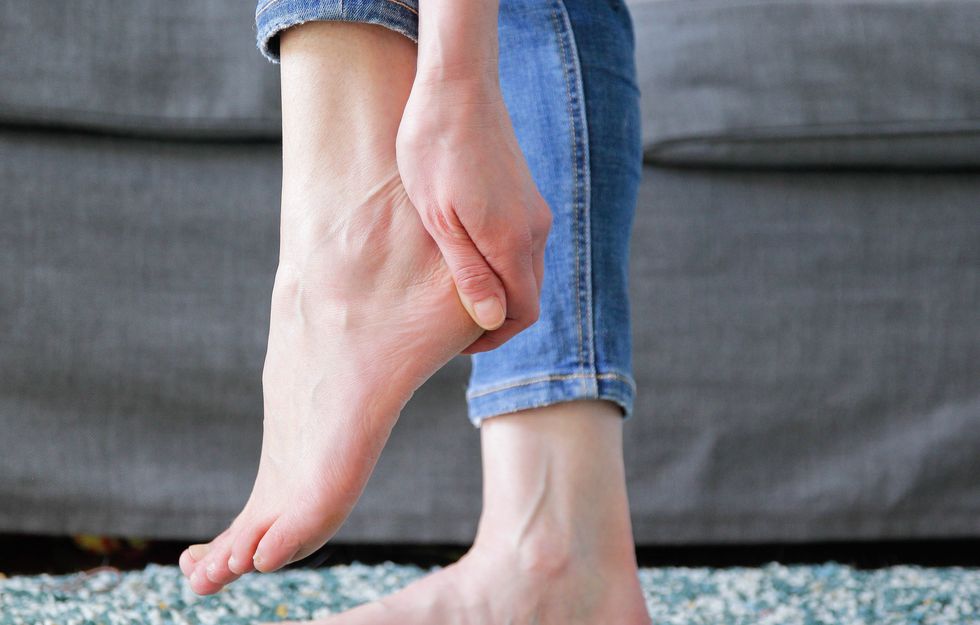



Cracked heels can be more than a cosmetic concern, as they may signal underlying health conditions that require medical attention.
Medical Director at MEDvidi, Dr Michael Chichak, told GB News that three conditions are known to contribute significantly to the development of cracked heels; hypothyroidism, diabetes, and peripheral neuropathy.
Each of these conditions affects skin health through distinct mechanisms, leading to the breakdown of heel tissue and potential complications.
These conditions work silently, causing damage to the skin through reduced oil production, dehydration from elevated blood sugar levels, or nerve-related complications.

Hypothyroidism significantly impacts skin health through multiple mechanisms
GETTY
Without proper management of these underlying health issues, what begins as minor heel cracks can develop into painful fissures that prove difficult to heal.
Understanding how these conditions affect heel health is crucial for both the prevention and treatment of persistent heel fissures.
Hypothyroidism significantly impacts skin health through multiple mechanisms, leading to persistent heel problems.
"People with hypothyroidism have poorer skin health because of dry, less elastic skin resulting from less natural oil secretion due to reduced metabolic activity," Dr Chichak explained.
Poor blood circulation, another common feature of hypothyroidism, compounds these issues, particularly affecting high-pressure areas like the heels.
Over time, the skin's ability to repair itself becomes increasingly compromised without proper thyroid function, the skin will subsequently struggle to maintain its natural moisture balance and elasticity.
Dr Chichak explained that diabetes also presents a distinct pathway to heel damage through its effect on blood sugar levels and hydration. High blood sugar leads to frequent urination, causing dehydration that compromises the skin's ability to retain moisture.
This dehydration particularly affects high-pressure areas like the heels, leading to pronounced dryness and cracking.

Minor heel cracks can develop into painful fissures
GETTY
Another clinically recognised cause of cracked heels is peripheral neuropathy, which can occur with diabetes, and creates additional complications through nerve damage.
The condition affects nerves responsible for sweating and sensation, leading to reduced skin hydration and diminished awareness of foot problems.
"With a lack of sweating, hydration levels drop, causing the skin to become drier and more prone to cracking in areas such as the heels," Dr Chichak explained.
The expert warned the conditions can create a dangerous cycle where skin damage worsens due to reduced awareness and compromised healing ability.
